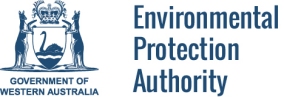This Technical guidance describes the impact prediction and assessment framework that the EPA expects proponents and consultants to use so that predictions of the extent, severity and duration of impacts to benthic habitats associated with significant dredging activities are presented in a clear and consistent manner.
This is generic guidance that applies State-wide and as such, it does not differentiate between types of dredging proposals or regional environmental differences. Applying the framework across different projects provides a common approach to setting environmental outcomes and for monitoring impacts, which could improve understanding and prediction of dredging related environmental effects.
This version of the Technical guidance was published in October 2021. The framework remains largely unchanged, however the Guidance now incorporates the relevant scientific findings from the Western Australian Marine Science Institution’s Dredging Science Node. The information generated by the research has been collated and reviewed to identify and further refine the key findings, with input from relevant stakeholders. The bulk of the additional information is detailed technical advice most relevant to tropical north-west Western Australia and provided in three appendices. These appendices include suggested guideline values based on the tolerance of key biota to dredging pressures, the scientific rationale behind the values, advice relating to the pre-development baseline surveys required to support impact prediction and advice to assist proponents with post-approval monitoring and management programs.
It should be noted that while the framework outlined in this technical guidance is focussed on the Environmental Impact Assessment (EIA) of dredging-related activities, the approach can also be applied to the EIA of other types of development proposals to address uncertainty around impact predictions.
